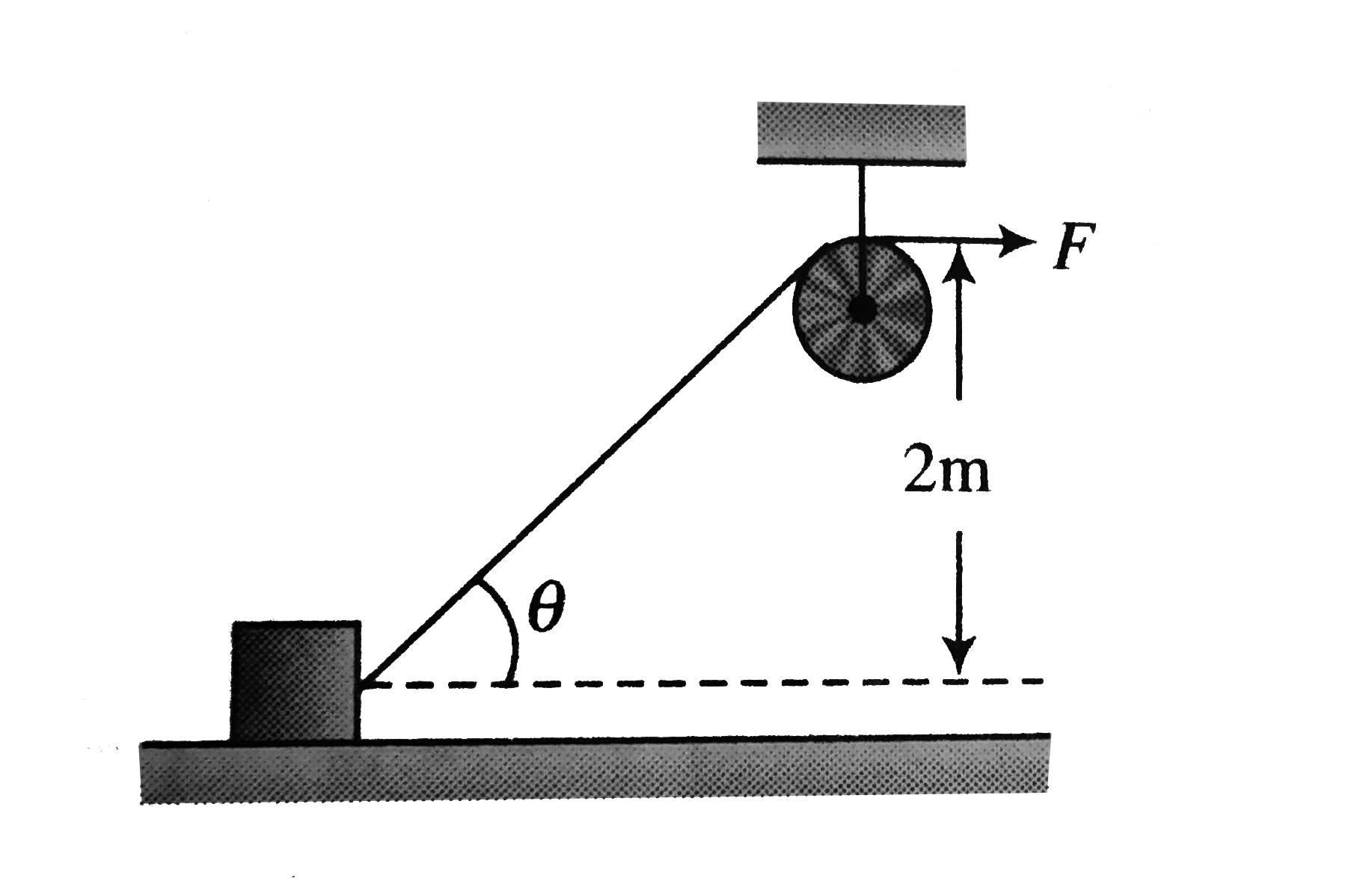A force F=50N is applied at one end of a string, the other end of which is tied to a block of mass 10kg. The block is free to move on a frictionless horizontal surface. Take initial instant as θ=30∘ and final instant as θ=37∘. For the time between these two instants, answer teh following questions?

Find the ratio of initial acceleration to final acceleration of the block
3√58
8√35
8√53
5√38
The correct Answer is:D
Initial acceleration =Fcos30∘m
Final acceleration =Fcos37∘m
Ratio =cos30∘cos37∘=√3×52×4=5√38
Topper's Solved these Questions
- WORK, POWER & ENERGYBook:CENGAGE PHYSICSChapter:WORK, POWER & ENERGYExercise:Integer
Explore 14 Videos
- WORK, POWER & ENERGYBook:CENGAGE PHYSICSChapter:WORK, POWER & ENERGYExercise:Archives (sinble Correct )
Explore 19 Videos
- WORK, POWER & ENERGYBook:CENGAGE PHYSICSChapter:WORK, POWER & ENERGYExercise:Multiple Correct
Explore 25 Videos
- VECTORSBook:CENGAGE PHYSICSChapter:VECTORSExercise:Exercise Multiple Correct
Explore 5 Videos
Similar Questions
A block of mass 1kg is tied to a string of length 1m the other end of which is fixed The block is moved on a smooth horizontal table with constant speed 10ms−1. Find the tension in the string
View SolutionA horizontal force of 4 N is applied to a block of mass 2 kg resting on a frictionless table. What is the acceleration of the block in ms−2 ?
View Solution
Knowledge Check
A force F=50N is applied at one end of a string, the other end of which is tied to a block of mass 10kg. The block is free to move on a frictionless horizontal surface. Take initial instant as θ=30∘ and final instant as θ=37∘. For the time between these two instants, answer teh following questions?

Net work done by the force F on the block isA(a) 503JB(b) 1003JC(c) 75JD(d) None of theseA force F=50N is applied at one end of a string, the other end of which is tied to a block of mass 10kg. The block is free to move on a frictionless horizontal surface. Take initial instant as θ=30∘ and final instant as θ=37∘. For the time between these two instants, answer teh following questions?

What is the final velocity of the block if initially it was at rest?A(a) √253ms−1B(b) 5ms−1C(c) √203ms−1D(d) None of theseWedge of 10kg is free to move on horizontal surface. At the given instant, acceleration of wedge is (string and pulleys are ideal)
 A2m/s2 towards rightB2m/s2 towards leftC1m/s2 toeards leftD1m/s2 toward right
A2m/s2 towards rightB2m/s2 towards leftC1m/s2 toeards leftD1m/s2 toward right
Two block of masses 3kg and 1kg are kept in contact with rach other on a frictionless horizontal surface.If a force of 10N is applied on the larger block what is the acceleration of the system? What is the contact force between the two blocks?
View SolutionTwo blocks of masses 3kg and 1kg are kept in contact with each other on a frictionless horizontal surface.If a force of 10N is applied on the larger block,what is the acceleration of the system? What is the contact force between the two blocks?
View SolutionTwo blocks of masses 2 kg and 4 kg are in close contact on a frictionless horizontal table. A horizontal force of 18 N is applied to the larger mass. What is the force at the surface of contact between the blocks?
View SolutionA force of 50N acts in the direction as shown in figure. The block of mass 5kg, resting on a smooth horizontal surface. Find out the acceleration of the block.

View SolutionThree identical blocks of masses m=2kg are drawn by a force F=10.2N with an acceleration of 0.6ms−2 on a frictionless surface, then what is the tension (in N) in the string between the blocks B and C?

View Solution

